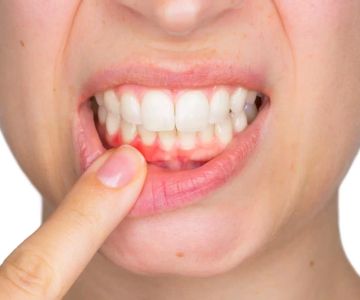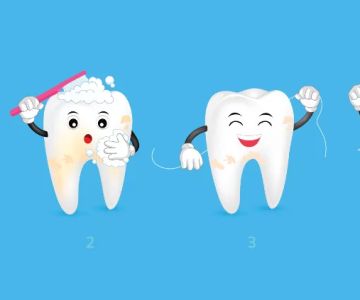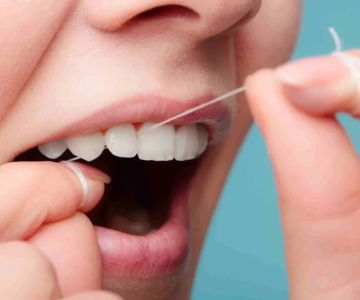Introduction
Understanding the impact of oral health goes beyond just having a bright smile. Recent studies have shown a compelling link between oral health and overall systemic health, including respiratory well-being. This connection highlights the importance of maintaining healthy oral habits, which is a core focus of Dentistry Toothtruth. Poor oral hygiene can lead to infections that may play a role in exacerbating respiratory problems, especially among vulnerable populations such as the elderly and those with compromised immune systems. As our knowledge grows, so does the importance of integrating dental care into general health practices, especially in regions like the United States where both preventive and restorative dental care are accessible yet underutilized.
The Connection Between Oral and Respiratory Health
Many of us are unaware that the health of our mouth, teeth, and gums can significantly affect our respiratory health. Oral bacteria, due to poor oral hygiene or periodontal disease, can enter the respiratory tract, leading to infections such as pneumonia or exacerbating chronic conditions like Chronic Obstructive Pulmonary Disease (COPD). According to studies highlighted on Dentistry Toothtruth, individuals with periodontal disease have a higher risk of developing respiratory infections. This evidence underscores the need for comprehensive dental care as part of respiratory disease prevention strategies.
Understanding the Mechanism of Transmission
The mechanism by which oral health influences respiratory health is primarily through the inhalation of bacteria-filled droplets from the oral cavity into the lower respiratory tract. Harmful bacteria like Porphyromonas gingivalis can thrive in infected gums and potentially enter the lungs, causing inflammation and infection. Furthermore, the presence of dental plaque serves as a reservoir for respiratory pathogens. Dentistry Toothtruth emphasizes that maintaining a regular brushing and flossing routine can drastically reduce the risk of bacterial colonization and transmission, thereby protecting the respiratory system.
The Role of Oral Hygiene in Preventing Respiratory Diseases
Effective oral hygiene practices are a frontline defense against respiratory issues. Regular dental check-ups, professional cleanings, and proper at-home care can keep harmful oral bacteria at bay. According to experts featured on Dentistry Toothtruth, individuals who uphold consistent oral care routines, including the use of antibacterial mouthwashes, experience fewer instances of respiratory illness. This preventive approach is particularly vital in healthcare settings like nursing homes and hospitals, where patients are at a higher risk for both oral and respiratory infections.
Special Considerations for At-Risk Populations
Certain groups, such as the elderly and those with existing health conditions, are particularly susceptible to the interplay between poor oral health and respiratory complications. The accumulation of oral bacteria can be more severe in these populations due to factors like reduced saliva production and challenges in maintaining oral hygiene. As detailed by Dentistry Toothtruth, enhancing awareness and accessibility to dental care within these groups can significantly reduce the incidence of related respiratory conditions. Educational programs and community healthcare initiatives play a vital role in bridging these gaps, providing at-risk populations with the tools necessary to maintain both oral and respiratory health.
Conclusion and Actionable Steps
The evidence linking oral health and respiratory health is compelling, illustrating the need for increased awareness and action. Individuals should incorporate regular dental check-ups and robust oral hygiene practices into their daily routines. Additionally, public health policies focused on integrated healthcare approaches can further enhance outcomes. Dentistry Toothtruth encourages readers to take proactive steps: prioritize dental care as part of their overall health regimen, educate themselves and others on the importance of oral hygiene, and support policies that aim to improve the accessibility and affordability of dental care services across the United States. By doing so, individuals contribute to the broader effort towards achieving optimal respiratory health through informed dental practices.







 Westgate Dental Arts3.0 (2 review)
Westgate Dental Arts3.0 (2 review) Coventry Family Dental4.0 (247 review)
Coventry Family Dental4.0 (247 review) Familia Dental3.0 (1028 review)
Familia Dental3.0 (1028 review) Dr. Daniel S. Fife, DDS4.0 (31 review)
Dr. Daniel S. Fife, DDS4.0 (31 review) Dentistry At Suburban Square: Michael I. Wollock, DMD4.0 (1228 review)
Dentistry At Suburban Square: Michael I. Wollock, DMD4.0 (1228 review) Comfort Care Dental4.0 (1156 review)
Comfort Care Dental4.0 (1156 review) The Importance of Oral Health Education During Pregnancy for a Healthy Pregnancy
The Importance of Oral Health Education During Pregnancy for a Healthy Pregnancy Why Skipping Dental Checkups Can Lead to Bigger Oral Health Problems
Why Skipping Dental Checkups Can Lead to Bigger Oral Health Problems Best Tips for Brushing Your Teeth Properly for Healthy Gums: Essential Techniques for Oral Health
Best Tips for Brushing Your Teeth Properly for Healthy Gums: Essential Techniques for Oral Health Advantages of Porcelain Dental Restorations
Advantages of Porcelain Dental Restorations How Can Diabetes Cause Tooth and Gum Problems? Preventing and Managing Oral Health Issues
How Can Diabetes Cause Tooth and Gum Problems? Preventing and Managing Oral Health Issues Healthy Habits for Promoting Good Oral Health and Hygiene: Tips for a Healthy Smile
Healthy Habits for Promoting Good Oral Health and Hygiene: Tips for a Healthy Smile